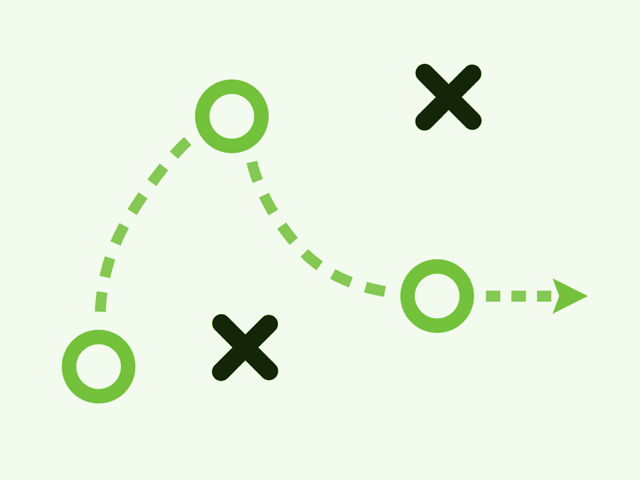How to get started with ABM: Step 4 - focusing in on your strategy & goals

So far we’ve covered how to plan and set up your ABM programs for success and Part 3 covered building out the Decision-Making Unit (DMU) and now we look at focusing in on your strategy and goals.
The one thing I’m sure we’ve all been guilty of is spending too long on the planning stage and reworking it hoping that the confidence to execute will come. That’s the beauty of ABM. The loop is always there. The plans allow for you to have actions set out so that when executed you will gain insights into how to refine your strategy as you go.
When it comes to knowing what plan of action to take, let your goals direct you. Understanding what the success of your ABM program will actually look like should be your north star. The best guiding principle is revenue. At the same time, you should be thinking about increasing deal size, boosting deal velocity, enhancing close rates and expanding the size of your existing customer base. These are KPIs, revenue is the ultimate goal.
Here are some questions to ask yourself when setting out your plan of attack:
1. What is the context of my ABM program?
The context and reason you have your ABM programs in place can fall into a few categories. Declan Mulkeen at Strategic IC uses these 4:
Account Penetration: To upsell and cross-sell into accounts that you are already working with
Pursue a Major Opportunity: The Request for Proposal you receive or the tender that comes to you. It might even be that dream account that you want to land
Develop a New Account: When chasing after a new logo or moving into a new industry to start working in
Changing Lanes: When you’re looking to be seen in a new light or have a new perception on what you look like as a business
2. How do I align target accounts to the relevant ABM program?
There are 3 main types of program. The approach that works best for each target account goes back to the tier you place them in:
One to Many ABM: One approach for numerous target accounts (hundreds), we’d recommend this approach for your lower tiered targets
One to Few ABM: One approach for a select group of target accounts (dozens) that share similar characteristics. This would suit your mid-tiered targets
One to One ABM: Unique programs for a specific target account (one to five). This should be the preserve of your top-tiered accounts as this approach takes the most time and resource but has the highest payback.
3. Why is my value proposition and messaging strategy important?
All the research you have put in, the work building up your ICP, tiered accounts and Decision Making Unit (DMU) allows you to have insights that you use in your strategy and key business drivers:
Industry & Sector Challenges: Some challenges are industry and sector-wide, we’re currently in a state of lockdown and some industries will have had a shared challenge with this.
Account Specific Challenges: Your messaging and value proposition should be presented in such a way that speaks directly to the specific challenges your account face as an organisation.
Buyer Persona Challenges: Tailoring your messaging depending on the person has been vital in all forms of marketing. None more so than with ABM, honing in on the challenges each member of the DMU would have to make sure you are relevant to the account as a whole.
4. How do I map my content to each buyer stage?
You’ll undoubtedly be creating loads of different types of content, from blogs and social posts through to webinars and podcasts. Understanding that throughout the buying stage each buyer persona will be looking for different types of content to help inform them is key:
Map Out Content: Put yourself in the shoes of the buyer persona and create content on what you know they would want throughout the journey
Repurpose Content: Can a webinar become a blog? Can a customer success call become a case study? Often it’s not the message, but how it’s delivered, that can make or break whether your recipient finds it valuable
Focus on ABX: Experiences. As buyers, we all want a fantastic experience as almost a minimum. Great buying experiences don’t happen by happy accident, map out the experiences you wish to give your buyer personas and how you want them to feel at each stage of the journey
Having these 4 main elements in place will allow you to know what strategies you are going to use to hit your goals. Of course, there’ll always be a need for you to change and adapt, to be agile, but with a plan in place you and your teams will not go off course.
Here's the video:
In the next blog, we get to my favourite part, tactics and plays and how you can bring your ABM program to life.
For our full "How to Get Started with ABM" series, check the "What is ABM and how to get started" page and our detailed pages - all incl. videos:
Step 2 Building Your Target Account List